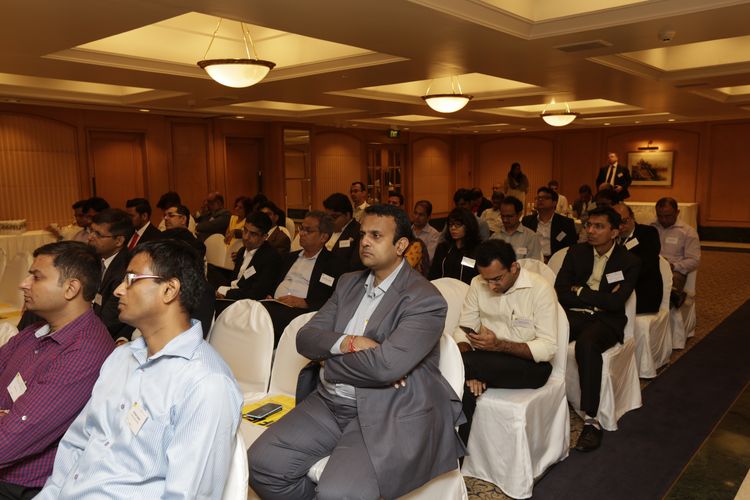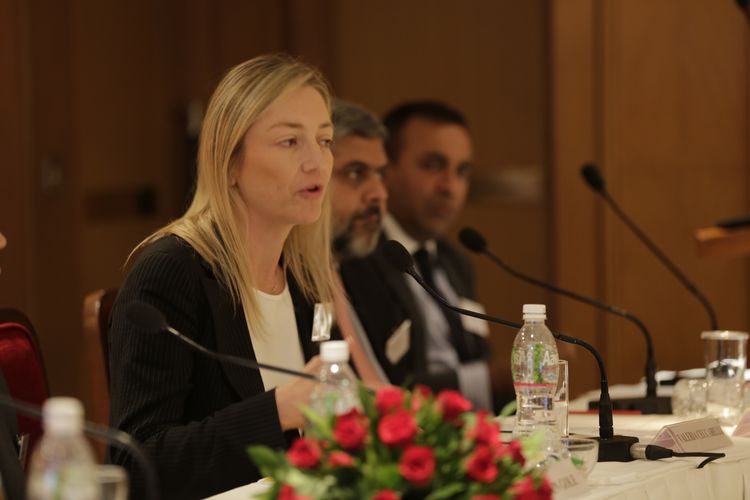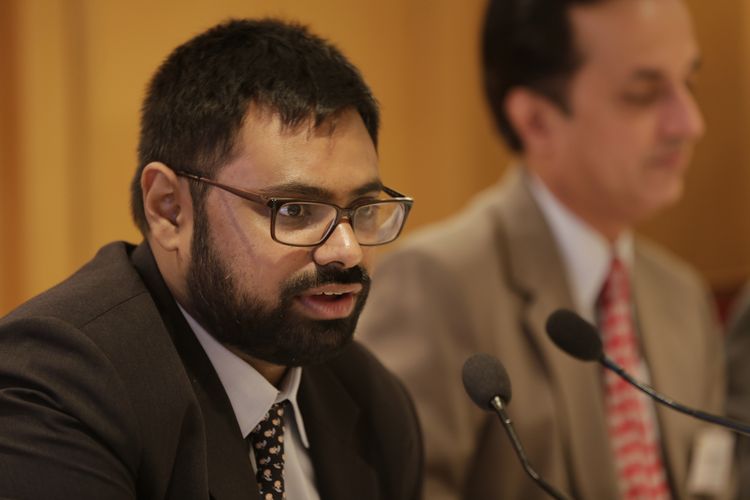IFR: I wanted to kick off with some macro thoughts. Recent Indian IPOs have traded well and there’s a comprehensive pipeline of future activity. That infers a lot of positive sentiment. At a macro level, looking at the general BRICS complex, India does seem to be the outlier in terms of positive expectation and opportunity. Are all the positive headlines warranted?
Tarun Gupta, T&A Consulting: The positive news and the positive sentiment in India are warranted. The only risk is that we get carried away by it so it should not breed any sense of arrogance, especially in our bureaucracy, and we shouldn’t take things for granted. It’s taken a lot of effort in terms of policy-making and execution and we are now seeing the benefits, including a vibrant domestic IPO market.
Companies have increasingly started talking about expansion and hopefully that should result in more capital requirements. If you look at the IPOs that have happened, a significant number have stemmed from private equity players looking to exit. Hopefully we will also see companies raising money to finance growth.
Overall India continues to be the shining light among the BRICS countries. If we want to catch up, we need to sustain 8% to 9% growth rates. It’s interesting that in India growth in the 7% range leads to disappointment. How many countries are there in the world that would be disappointed with a 7% growth rate?
IFR: Sumit, what’s your read of the mindset of corporate India in terms of expansion and raising expansion capital? Capacity utilisation levels are disappointing, which infers lack of demand for investment capital as the capex cycle has yet to kick in.
Sumit Khanna, Deloitte: There is cautious optimism but you need to look sector-by-sector. Public spending has been kicking in: the government has a very ambitious roads programme, for example, which is being delivered. If you look at consumption of cement and steel, both these indicators have started picking up. There has also been a healthy rate of increase in commercial vehicles sold in the country, although it has dampened down in the past couple of months, and in sales of cars and two-wheelers.
There has been positive consumption in certain demand indicators. On the one hand, the government is pushing infrastructure growth, which is leading to consumption of cement, steel and commercial vehicles and that will start spreading around the economy. Also the expectation is that this year, after many, many years, we will have a normal monsoon. India still has a very large rural economy in terms of the percentage of population if not so much as a percentage of GDP. With a normal monsoon cycle kicking in there will be increased rural consumer spending.
On the whole we’re in a good place. But you’re right, companies haven’t funded projects at the speed they would like so government spending is leading private investment. That is a fact of life but clearly there is hope that with continued policy reform – the Goods & Services Tax (GST) will be a big impetus for that – and with continued government spending, the private investment cycle will kick in soon. Clearly it’s still early days but we can see the green shoots and hopefully policy reform is going to bear fruit now.
IFR: Bharat, when can the investment cycle be expected to kick in and to what extent will capital markets provide momentum for it?
Bharat Reddy, JP Morgan: The consumption story in India is very encouraging and we do see demand picking up on the back of a good monsoon; the GST bill having been passed and a relatively stable political outlook with, as Tarun alluded to, more than 7% growth. A number of international funds now consider themselves underweight India and are in fact topping up their investment. I think the impetus for the capital markets is very positive and will translate into domestic investment picking up over a period of time.
Foreign direct investment has picked up very significantly since the Modi government came to power. I think domestic investment will definitely increase with certain infrastructure projects led by the government getting a fillip. This is all very positive in the short term.
IFR: Does India need foreign investors or can private capital fund the items we’ve discussed so far, be that Indian retail, high net worth or institutional investors?
Bharat Reddy, JP Morgan: If you look at the current scenario, foreign institutional investment plays a major role in our domestic stock market and its role is recognised and appreciated. I think the quantum, the diversification and the sheer scale of investment required by Indian corporates requires FII investment. The National Infrastructure Investment Fund is a very good initiative set up by the government and which has sub-sectors for sovereign wealth funds, so clearly even at a policy level there’s recognition that we need cross-border investment.
IFR: Notwithstanding all of the positives, it’s not all plain sailing for foreign investors looking to invest in India. Lack of clarity around taxation is clearly one issue, especially for DRs. Abhimanyu, could you highlight some of the challenges you think foreign investors face?
Abhimanyu Battacharya, Khaitain & Co: You’re quite right. From a DR perspective, what has been highlighted is that it’s all very well for the government to have a new liberalised DR scheme out there; the markets have appreciated it from that perspective. However, the tax regime has lagged. There was talk of the government giving much-needed clarity that unlisted stock that forms the underlying for depository receipts will get the same tax benefit as listed stock. That has not yet come through.
Generally speaking, from a direct equity investment perspective, there is clarity on capital gains tax. The larger question is from a DR perspective. You’ve liberalised the regime to allow any kind of security, be it unlisted equity or debt, and you’re permitted to issue DRs underlying such securities. We were all hoping for clarity in the last budget, primarily from a capital gains perspective.
We’re hoping for that clarity in the next budget. In fact, there is some indication that this will be taken up seriously by the government. Discussions with stakeholders have taken place; they’ve met the relevant people in the government. Lack of clarity around taxation is a hurdle for unlisted companies in India that want to access the overseas market through the DR route.
Dotcom and tech companies are keen to access offshore markets because they feel they may get a better valuation overseas. Companies have brought up some of the outstanding issues with the government. This is on everyone’s radar and we should see a resolution at some stage. If not, the liberalisation that they have launched won’t take off.
IFR: Valeria, you come to India a lot and you visit a lot of locations. How do you read sentiment on the ground? What’s on the minds of companies you visit? Has sentiment changed over the last six months to a year?
Valeria Ceccarelli, SIX Swiss Exchange: We’ve been coming to India for over three years and I think the mood has changed. Before Prime Minister Modi was elected, companies were in waiting mode. After the election there was a boom in optimism, in fact almost a hype of expectation to the extent there was a misalignment with reality. In the past six months, I’ve been sensing some positive momentum, not only in terms of expectations but also in terms of something really happening.
Meeting with companies, we have seen increased interest in considering offshore opportunities. Why is that, given that the domestic capital market is pretty healthy and that injects more confidence? The companies we’re meeting that are looking at offshore capital-raising are mainly companies that have international operations. We are meeting with more and more Indian groups that are increasing their investment in Europe and they want to grow these businesses.
There are also companies that aren’t able to find the right peer group in their domestic market or that want to tap into a different investor base or broaden their investor base, which is an important driver to look at offshore markets. Also, we’re talking to companies that have a business model that is probably better understood in other jurisdictions, like for instance intellectual property-driven businesses. Overall there is positive momentum here and we hope that this interest will turn into concrete transactions in the short-to-medium term.
IFR: Could you talk about the evolution that you perceive in some of the big Indian business groups in how they treat their overseas subsidiaries? Is there a drive towards autonomy among some of the subsidiaries? How does that translate into thinking about capital requirements?
Valeria Ceccarelli, SIX Swiss Exchange: Some of the European or international operations of Indian conglomerates have been growing in the past few years and have reached a certain size that necessitates some level of direct funding. The European capital market is also more suitable for companies outside India that are part of bigger Indian groups that want to increase their visibility there. It’s a trend we have been seeing in the company thinking about capital requirements.
IFR: We’ll come back and pursue some of those themes as we go along. Mithun, let me come to you as a corporate executive responsible for M&A and equity at a large well-known corporate group in a sector that’s core to India’s growth prospects. How do you view the capital-raising universe in general? Could I also ask you to speak about your forthcoming offshore-listed InvIT?
Mithun Gole, Sterlite Power: If you look at global infrastructure models, the key investors in these assets are long-term financing institutions: pension funds, sovereign wealth funds and insurance companies. These institutions have deep pockets and like assets with stable, long-term cash flows. But such investors have been absent from Indian markets, although the infrastructure story has been there for quite some time.
There are key reasons for this. First of all, projects have been solely dependent on banks and promoter capital for funding. There has been a lack of a regulatory framework enabling global investors to invest directly in these assets without taking development risk. Also, certain ambiguities around the tax structure have to be ironed out before any product makes sense to international investors.
InvIT, as a product, is focused on offering stable long-term returns to investors. It’s a yield-based product. Investors here invest for the long term, so aren’t looking at an exit within two or three years. This product essentially does two things. First of all it gives much-required market access to international investors to a ready market of infrastructure assets, with a tenor of 20 to 30 years, with stable cash flows.
Secondly, it frees up a lot of bank and promoter capital. These forms of capital have a larger risk appetite and these can be effectively recycled and invested into fresh projects where construction and development risk is high. Most operational assets with demonstrated and stable cash flows can be offered under InvITs.
This is the model that is evolving in India right now. The government and the regulators have been quite pragmatic in evolving this. We are working together with these agencies to iron out any ambiguities. Going forward, we believe that the InvIT market will evolve into a very deep market in India. It will change the face of Indian infrastructure because it will give Indian infrastructure access to a global pool of investors, which is currently limited.
Tarun Gupta, T&A Consulting: If you look at what happened in the past, a lot of bank lending went to infrastructure companies, be it in roads, the power sector, or sectors like steel. Over time, a certain level of stressed assets built up on the balance sheets of banks holding those loans. That was for multiple reasons, including policy implementation and so on.
As a result access to capital for this sector came down. At the same time companies operating in the sector had stressed balance sheets. One thing that has emerged is that the government is pushing this sector hard, by way of both public spending as well as reducing the number of stuck projects.
At one point, by way of example, the National Highway Authority of India had close to US$10bn of projects stuck in arbitration. Those projects are starting to achieve closure and we are now seeing revised interest from investors to participate in such assets. So that’s point number one: a revival in investor interest.
Secondly, since balance sheets have in some cases been stretched, there is need for equity capital. I feel this need will initially be realised more on the domestic side, although participation will be more from large foreign institutional investors.
As far as the SIX Swiss platform is concerned, a priority for us on the equity side is more on those sectors where we have a peer group and a cluster, which happens to be life sciences, specialty chemicals and Indian business groups with European businesses. On the debt side, as long as there are the ratings in place we have a very deep debt platform.
To see the digital version of this roundtable, please click here
To purchase printed copies or a PDF of this report, please email gloria.balbastro@tr.com


